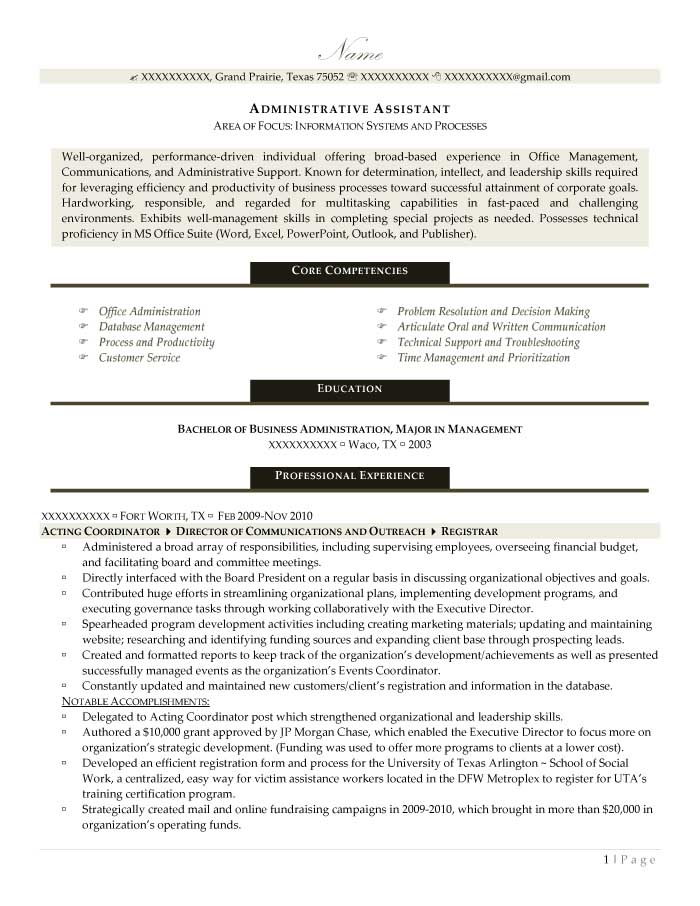With many companies reopening their businesses amid COVID-19, a lot of job hunters are seeing this silver lining to make ends meet. In the recent report released by the US Bureau of Labor Statistics, the total nonfarm payroll employment in December 2020 was dropped to 87,000, from -140,000 to -227,000, with the unemployment rate remaining unchanged at 6.7%. Knowing that thousands of applicants, including first-time job seekers, are submitting their resumes to multiple employers each day, how can you be so sure to stand out from the pack? Level up your hiring chances by including necessary resume sections on your application document! Wondering what they are? Read on.

Resume Sections (Plus Tips in Presenting Them)
Did you know that resume sections play a vital role in your job search? The way you present your information, credentials, and skills can make or break your application. Hence, if you’re a first-time job seeker or one of those professionals who are planning to write their own resume, it’s a must that you know what the resume sections are, as well as the ways on how you could present them.
Header
As a job seeker, you might be thinking of the best way to grab the attention of hiring managers, right? The answer is you should start at the top of your resume, the header. It’s the resume section where you write your name, mailing address, phone or mobile number, and email address. Aside from personal and contact details, some job seekers and professionals also include their LinkedIn URL and websites, informing the readers that they have more to offer.
To effectively engage your reader to go through your resume, make sure that your resume header is eye-catching. You can achieve this goal by using light colors or shades; choosing font styles and sizes that are easy to read and not overly decorative; and putting emphasis on your personal information. Regarding your mailing address, it is advisable to write your complete home address. Moreover, never ever use unprofessional email addresses.
Qualifications Profile / Summary of Qualifications
Are you aware that including an objective statement on your resume could stop you from getting your dream job? Let me introduce you the profile or summary section. Apart from the header, this resume section will also spark the interest of hiring managers. Through this section, you can immediately highlight your skills and abilities in three to five sentences instead of stating your career objective. However, writing your profile section is not as easy as one-two-three. With many applicants in the job search pool, how can you be so sure that your profile outshines the rest?
Quick tip: Include impressive qualifications and skill sets relevant to your target job, professional attributes, and experiences you have gained over the years, as well as powerful adjectives or adverbs. You can also mention here the languages you fluently speak.
Skills Section
Since the profile or summary section won’t highlight all your skills, you can count on this resume section. In today’s resume writing standards, there are several titles for the skills section. These include ‘areas of expertise,’ ‘core competencies,’ ‘functional strengths,’ ‘functional skills with experience,’ and ‘summary of relevant experience.’ Regardless of its title, this section is vital in your job hunt as it contains keywords tailored to your desired job. Nowadays, many companies use applicant tracking systems (ATS) to select and screen qualified applicants. Putting the skills section increases the chances of one’s resume showing up in the employer’s search results. Furthermore, it can effectively help a job seeker prove that he has the necessary knowledge and expertise in the field. But how does this section help you land job interviews?
As mentioned, the skills section must contain keywords relevant to the job you are applying for, either industry-specific or soft skills. Though as much as you want to highlight your skills, it is highly recommended to limit your entries to 10 items and sprinkle your other skills (keywords) throughout your resume.
Experience Section
Obviously, this is where you present details of your work history, such as your employers, company locations, your job title(s), and employment dates. Also, this is the resume section where you mention your daily job descriptions and highlight your key accomplishments. Having that said, it’s the most crucial part of a resume since this is where you speak of your work experience. Hence, to effectively impress your hiring managers and the bots, make sure you write your responsibilities and achievements in a professional manner. How? Read on.
- Use impactful resume action words to tell employers how you fulfill your responsibilities;
- As much as possible, don’t repeat words or phrases when enumerating your roles. Using words repetitively on the resume will make your application redundant and dull; and
- Be mindful of verb tenses to ensure they are consistent for each job you list.
Education
Your education serves as one of your edges among other applicants that will help you level up your job search. Why? Because not all candidates are degree holders and others’ education is not relevant to their target field or job. But don’t underestimate them. The way they present their information on their resume could help them boost their application.
On the other hand, if you’re a fresh graduate and looking for a job related to your course, your education is your strong selling point. Blow your competitors out of the water by highlighting your knowledge and skills in the field! Along with your degree, include the name of the campus where you received your diploma and its location. It is also recommended to write your GPA if it’s 3.5 and above, as well as the awards and honors you earned, if there were any. Studied abroad? Add that on your resume. Take note that putting your high school information is highly discouraged.
Licenses and Certifications
Including your licenses and certifications along with your education is a plus in your job application. Aside from your degree, you can also impress your prospective employer that you’re not only a degree holder, but also a licensed or certified professional.
Are you worried that you won’t snag that job because you’re not a degree holder? No worries! If you have licenses and certifications relevant to your target field and position, you can still include them under this resume section. However, don’t include irrelevant licenses and certifications on your resume as they don’t add value to your application.
Tip: If your education and licenses and certifications are related to each other, you can present them in a single manner by titling ‘Education and Credentials’.
Professional Development / Training
If you’re actively participating in various training, workshops, and seminars to further enhance your knowledge and skills, add them under this resume section. This section gives hiring managers an idea that you have thirst for knowledge. You can also put the granting institution as well as the years when you completed them.
Awards and Honors
Listing the awards and honors you earned from your education, employment, and even in volunteer activities could impress prospective employers that you’re an achiever.
Activities
Have the heart of a volunteer? Always looking forward to giving back to your community? Maintaining active involvement in community events? Stand out from the pack by adding these activities on your resume.
Technical Skills
Aside from your soft and industry-specific skills, you can also include your technical skills on your application document. Being a tech savvy individual is one your advantages among other candidates.
Additional Resume Sections
Apart from the abovementioned resume sections, there are also others that are acceptable in resume writing standards. These include:
- Projects. Worked on several projects? List them down.
- Publications. Wrote and published any articles? Include them.
- Conferences and Presentations. Presented your papers in conferences? Add them.
- Researches. Conducted researches? Write them.
How about the references section?
Expert resume writers and career coaches are discouraging candidates to include references on a resume. These are listed on a separate sheet and you’ll only provide them when they are requested by the employers.
Does your resume contain the necessary resume sections? Does it present your information like a pro? If so, excellent work! But for those who are still struggling in writing their resumes, Resume Prime got your back. Check out our resume writing services today!





